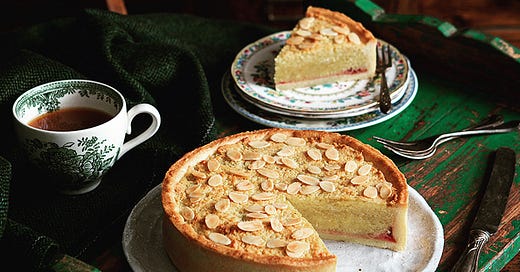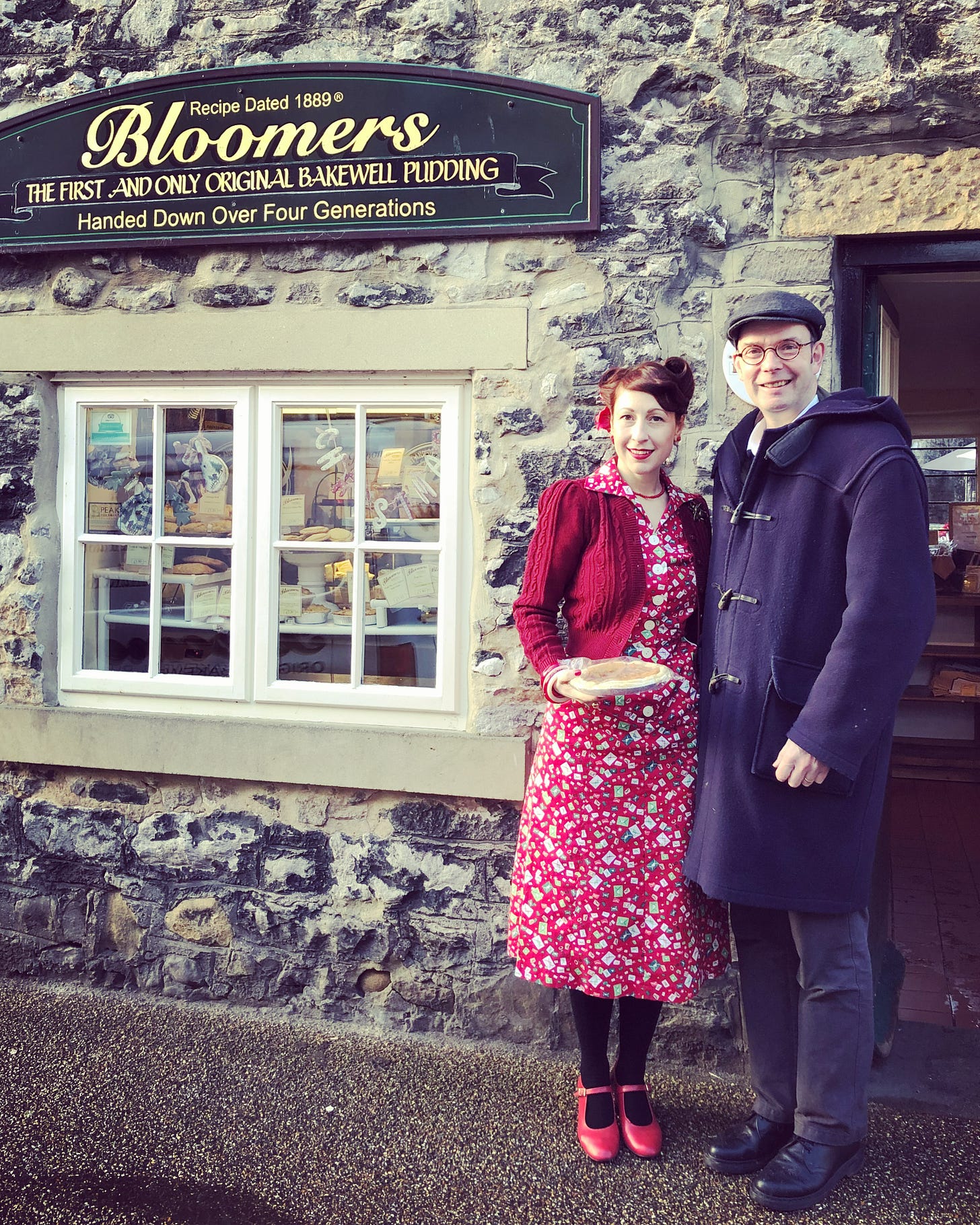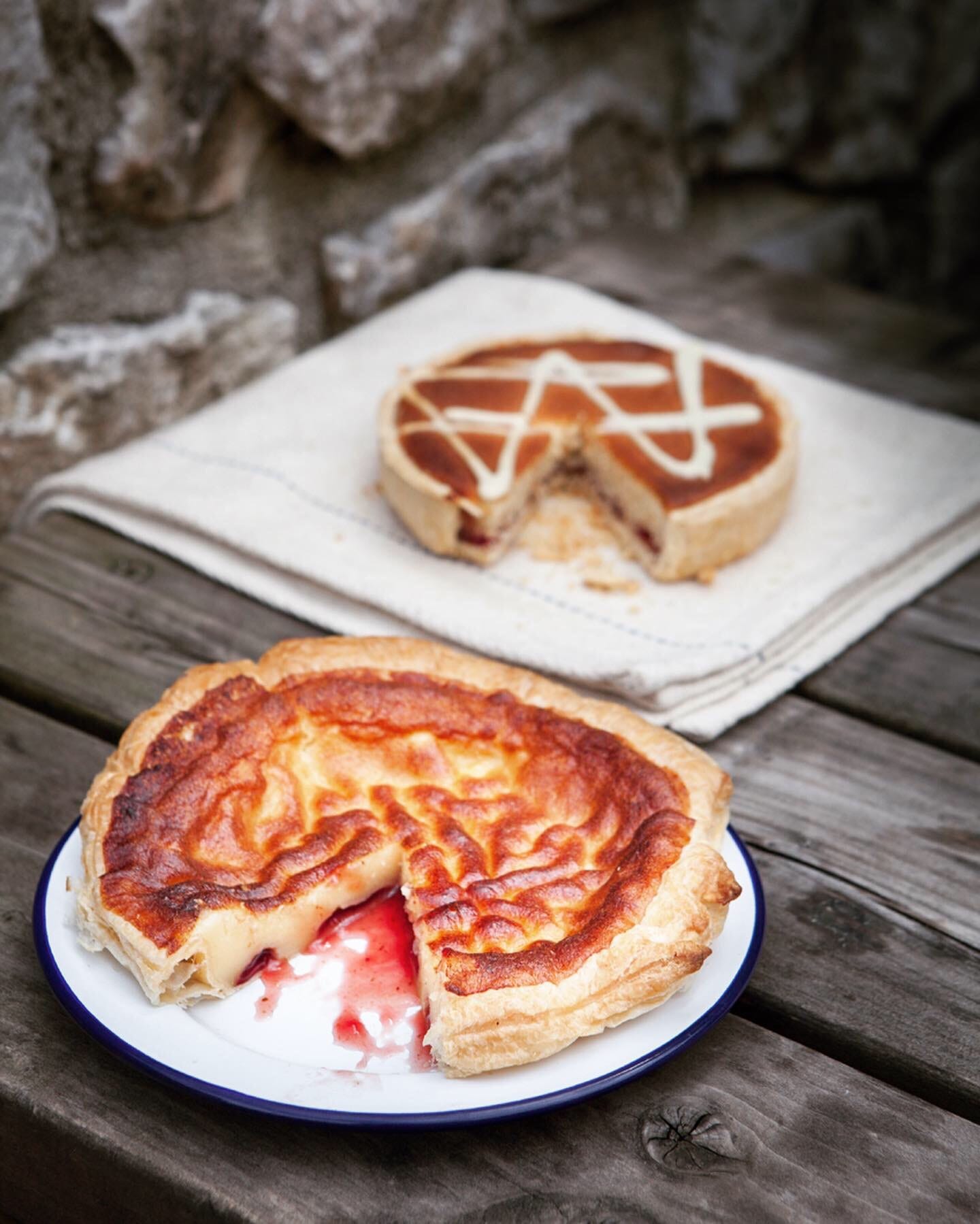Hello everyone, and welcome to my new subscribers! It’s been over 2 months since I last posted because I’ve been on my book tour in the US for 2 weeks and then went straight into 2 months filming new seasons of Bake Off Flanders and Junior Bake Off, which was FULL-ONN! I’m glad to send you this update today, while I should be working on a new commissioned book I’m working on for a TV show…. but I missed writing to you! Hope you had a good summer so far!
Today is National Bakewell tart day so it seemed like the perfect time to talk about that cherry on top again! Cherry on top you say? Yes, when we say Bakewell, many will think about “Cherry Bakewells” a small scallop-rimmed pastry tart, snow-white icing and smack in the middle a bright red candied cherry. They are sold in British supermarkets in cardboard boxes and plastic wrapping and they are quite iconic, but… iconic doesn’t mean that they are what a “Bakewell” really is…
(By the way, I’ve written more about the other Bakewell, the Bakewell Pudding, in my book Pride and Pudding, the history of British puddings, Savoury and Sweet)
When researching my first book ten years ago I was on a mission in Bakewell to uncover the mystery surrounding the Bakewell pudding and Bakewell tart, two very similar bakes, although the pudding has a custard filling and is baked in a puff pastry base, while the Bakewell tart has a more cake-like consistency – often made with frangipane in recent years – and is baked in a shortcrust base.
Nineteenth-century cookbooks show recipes for Bakewell tarts, but they are always called Bakewell pudding, which tells us that people were baking two kinds of Bakewell pudding at that time and one of the recipes was renamed tart in the early 20th century.
Filming a program with the BBC back in 2019 about how the iced ‘Cherry Bakewell’ – the supermarket version of the Bakewell tart – was born, I found out that although eight years ago you couldn’t find an iced Bakewell tart in Bakewell (at one bakery there was even a sign saying that you shouldn’t ask about iced Bakewells because ‘Bakewell tarts are not iced’), today you can choose between a plain Bakewell and an iced Bakewell. The owner of Bloomers of Bakewell bakery, where the aforementioned sign used to be, told me, rather sadly, that tourists now demand iced Bakewells because they know them from the supermarket shelves and see them as the original “Bakewell”. Damn, that is sad…
The iced ‘Cherry Bakewell’ is a completely different product. It was developed in the 1970s by Mr Kipling, a major manufacturer of cakes, and today the tart is manufactured on a massive scale throughout Britain. And so the history of this bake changes again. It is only a matter of time before the Bakewell tart without the icing will be forgotten, it might not happen in the next 3-5 years but what about 5-10 years…
Keep this older Bakewell tart alive by baking the recipe from my book Oats in the North, Wheat from the South which is based on one from 1927. It does not make a frangipane but uses breadcrumbs and almond meal, which makes for a superior, more dense filling than frangipane. Due to the dense nature of this tart, it will keep for many days in an airtight container. I think it even improves on the second day.
You can also make a Bakewell as a traybake. This is known as a ‘Bakewell slice’ when divided up into portions, great for parties, bake sales or large families.
Bakewell tart, the real thing
For 6–8 people
For the pastry
1 quantity of shortcrust pastry (not going to make this post super long with pastry instructions, buy it or use your fav recipe or mine on page 235 of Oats in the North)
For the filling
20 g apricot kernels (DO NOT SNACK ON THEM keep away from children as they cause upset stomach when eaten raw and in large quantities)
1 tbsp rosewater
150 butter
75 g plain or demerara (for more flavour) sugar
150 g almond meal
50 g fresh white breadcrumbs
2 eggs pinch of grated nutmeg
3 tbsp raspberry jam
handful of flaked almonds flour, for dusting
For a 20 cm (8 inch) round cake tin
Make the shortcrust pastry following the instructions on page 235 of my book or another book you like, or use store-bought, there is no shame in it.
Prepare the cake tin. Roll out the pastry on a floured work surface to a thickness of 5 mm. Fold in the sides so that the pastry will fit into the base of the tin, then gently lift it into the tin, letting it sink down into the base.
Use a small piece of excess dough to firmly press the edges of the pastry into the tin. Trim the excess pastry with a knife and then pierce the base with a fork. Put the pastry in the fridge to rest for at least 30 minutes or overnight (we don’t blind-bake this pastry as we want it to blend a little with the filling).
Blanch the apricot kernels in boiling water, then remove the skins. Using a mortar and pestle, bash the apricot kernels with the rosewater to make a paste.
Melt the butter in a saucepan but don’t let it bubble. Remove the pan from the heat, add the sugar, almond meal, apricot kernel paste and breadcrumbs and stir well.
Add the eggs and nutmeg and mix well. Let the filling rest for at least 1 hour. Towards the end of the resting time, preheat the oven to 200C (no fan heat!!).
Spread the jam over the pastry base and spoon the filling on top. Sprinkle with the flaked almonds and bake for 30–35 minutes until golden brown.
If you feel you now NEED my book Oats in the North Wheat from the South, with more historical and traditional British bakes, you can order it online here for just over 12£ (half price!!) or preferably if you can at your local independent book store, we need these guys and book stores are THE BEST.








Another great newsletter, I love how you keep old traditions alive. A true historian-baker.